Tag A Tiny
WHAT IS TAG A TINY?
Get involved! Help the Large Pelagics Research Center improve scientific understanding of large pelagic species by supporting and participating in co-operative research projects.
Tag A Tiny is a cooperative tagging program for juvenile bluefin tuna. It was started in 2006 by the Large Pelagics Research Center led by Dr. Molly Lutcavage, who recognized the need to identify migration paths and habitats of juvenile Atlantic bluefin tuna in the NW Atlantic. Their year-long movements were unknown, and large data gaps for small fish were (and still are) an impediment to understanding the stock’s trajectory. The initial objective of Tag a Tiny™ was to determine the feasibility of developing a network of cooperative fishermen taggers in a region where commercial fishing for juveniles no longer occurred, and where scientific tagging via purse seine or bait boat was highly improbable. The model worked, and to this day, the program enlists recreational anglers and charter boat captains to catch, measure, tag, and release juvenile bluefin with conventional, double-barbed nylon “spaghetti” ID tags purchased from The Billfish Foundation.
If you are a recreational angler or charter captain, please consider joining our tagging efforts. Click on Request tagging kit and fill out the form. We will contact you with more information about the program.
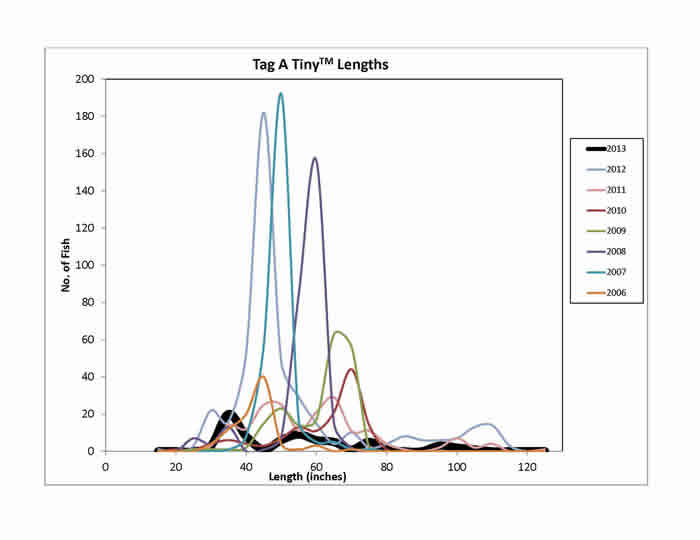
The distribution of sizes of tagged fish and the number of traditional tags put out by Tag A Tiny participants since 2006.
What comes in a Tag A Tiny Tagging kit?
As a new volunteer, you will receive a Tag A Tiny tagging kit. This kit contains 5 conventional tags with associated data cards as well as educational leaflets illustrating the proper technique and placement of the tags. If necessary, a steel tagging applicator can be included. Should you have any questions or concerns about the tagging process, an LPRC member is always available to chat and give some pointers. Contact us via email or phone any time.
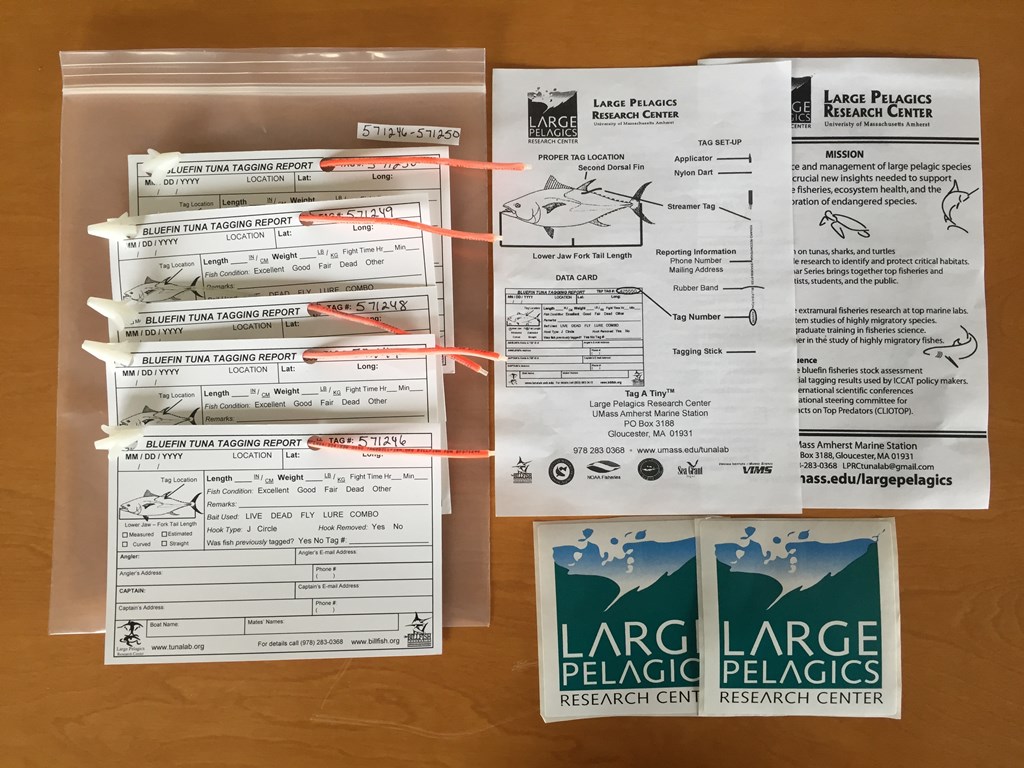
What to gear up for tagging?
Tagging stick
First, you’ll have to fashion yourself a tagging stick. We recommend fixing your steel applicator to a wooden dowel like the image below. Make sure to have some sort of stopper that can help adjust the length of the steel applicator depending on the size of the fish. You don’t want to seriously impale and/or injure the fish.
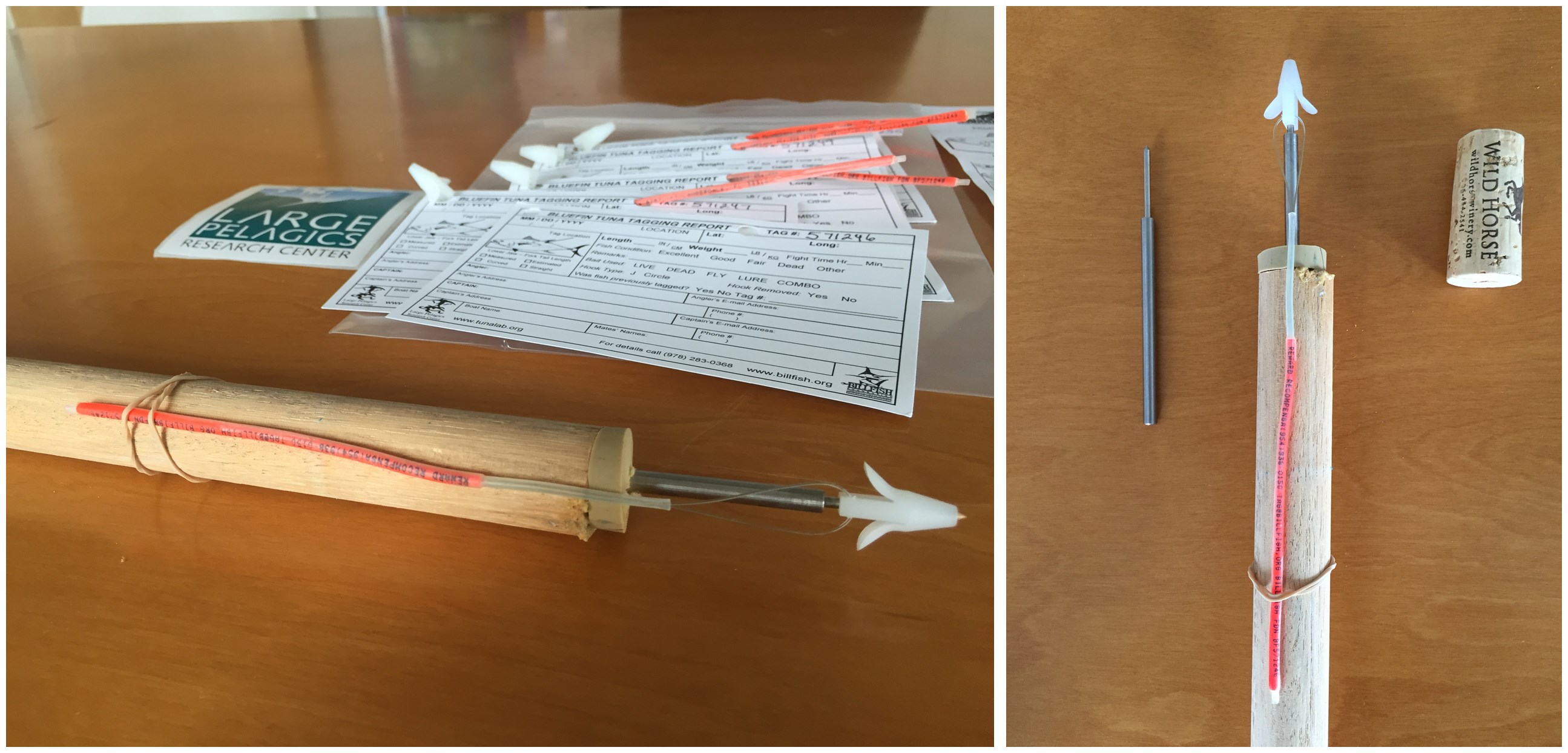
Steel applicator inserted into wooden dowel to create a tagging stick
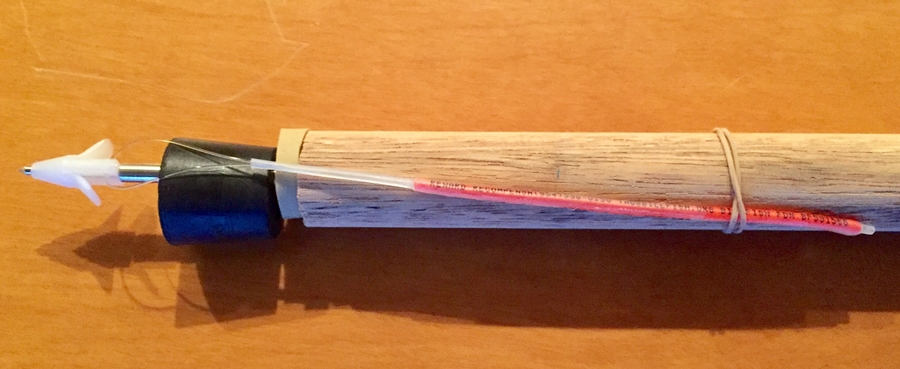
Plastic stopper to adjust depth of tag application
Data cards
Each individual tag comes with an associated data card, with information such as date, lat/long, fight time, condition and size of fish, whether the hook was removed or not, angler and captain contact information, etc. Verify that the tag number matches the Data card number.It is imperative that ALL INFORMATION IS RECORDED. It does us no good if a tag is deployed and we don’t know when, where or what was tagged.
On the water
Remember to
- Verify that the Tag Number matches the Data Card number
- Slide nylon dart over the end of applicator
- Secure tag to tagging stick with rubber band
- Secure loaded stick within easy reach and store data card in dry location
Handling tips
- Use wet gloves when possible
- Never lift or carry the fish solely by the tail
- Minimize the time out of the water to reduce stress
- Don't tag seriously injured or overly stressed fish
Tag and Release
- Insert dart into muscle just below base of 2nd Dorsal Fin
- Very little force is needed to insert the tag
- Aim for anchoring the dart into the fin rays, the internal vertical cartilage that support the dorsal fins
- Measure or estimate Length and Weight of fish
- Remove the hook or cut leader near hook
- Return the fish to the water as quickly as possible
- Exhausted fish may be revived by towing it forward slowly
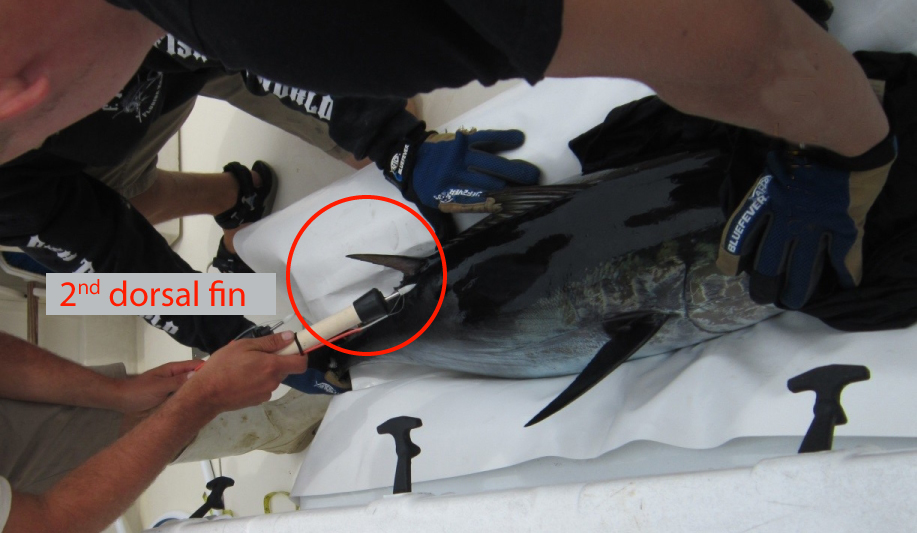
Proper handling of a juvenile bluefin – wet gloves for handling the fish, wet dark cloth over the fishes eye for minimizing stress, a soft surface to place the fish and a plastic stopper on the tagging stick to adjust for tag depth.
Immediately after the release, record the release date, location (Latitude & Longitude) and size of fish. Completely and legibly fill out the Tagging Data Report Card. Drop your data card in the mail as soon as possible. NO POSTAGE NECESSARY.
